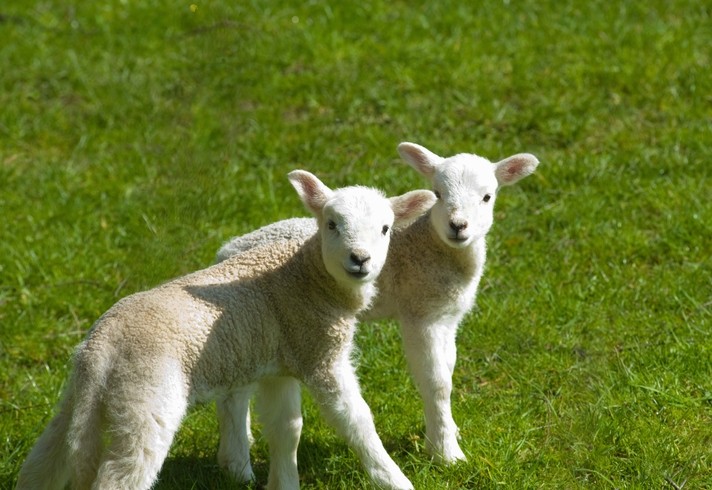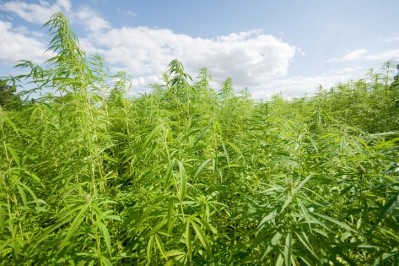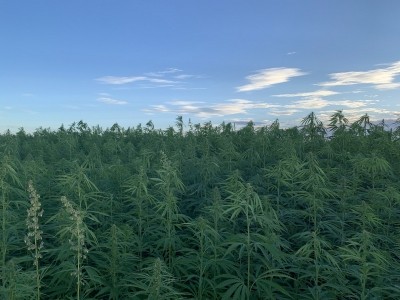US research: Hemp byproduct is effective replacement for alfalfa in ruminant diets

The findings were recently published in the Journal of Animal Science.
Cannabinoid (CBD) production creates high quantities of spent hemp biomass—made up of the plant’s extracted leaf and stalk portions. To his knowledge, this is the first study to evaluate the effects of feeding that by-product to livestock, said Serkan Ates, an associate professor in Oregon State’s College of Agricultural Sciences, and co-author of the paper.
“The findings are important for both hemp farmers and livestock producers because they provide evidence that this byproduct of hemp can be used in livestock diets. If the Food and Drug Administration approves its use as an animal feedstuff, hemp farmers could have a market for what is essentially a waste product and livestock producers may be able to save money by supplementing their feed with the spent hemp biomass,” added Ates.
The byproduct has not been approved by the FDA since its effects on animal health, performance and product quality are unknown.
Oregon State University is also carrying out research into feeding spent hemp biomass to cattle. In March 2021, the USDA’s National Institute of Food and Agriculture (NIFA) granted it nearly $300K to do so.
For the lamb study, the Oregon State researchers fed male lambs two different amounts of spent hemp biomass (10% and 20% of total feed) and then withheld the hemp biomass for four weeks, a so-called withdrawal period. They then assessed weight gain, carcass characteristics, meat quality and health parameters of the lambs.
The team saw that the nutritional quality of spent hemp biomass is on par with alfalfa, which is commonly fed to lambs, and presents lower palatability and better digestibility.
Feed intake was negatively affected by feeding 20% spent hemp biomass in the short term but not in the long term, while feeding 10% spent hemp biomass increased feed intake long-term. Despite this, the authors said they did not see any negative effects on the weight of the lambs.
Except for an increase in shrink and cook loss that also may affect the tenderness, other parameters related to carcass and meat quality were not affected by feeding spent hemp biomass, they reported.
Spent hemp biomass affected metabolism in a way that does not appear detrimental and improved the antioxidant capacity of the animals, noted the researchers.
The liver of the animals was not affected but a decrease in liver clearance was observed, the ability of the liver to extract or metabolize a drug. The authors indicated that this last finding requires further investigation, since it could affect the clearance of other drugs that may be given to lambs.
The Oregon Beef Council funded the research, with additional support from the Global Hemp Innovation Center at Oregon State University and the US Department of Agriculture’s Agricultural Research Service (ARS).
Kansas State University has been generating new insights around the use of hemp ingredients in feed.
Securing approval for hemp ingredients in feed
The 2018 US Farm bill saw recognition for hemp, as an agricultural commodity. While interest has grown in industrial hemp as feed for animals, FDA approval, through the Association of American Feed Control Officials (AAFCO), is required before hemp can be fed to livestock or pets.
AAFCO and the National Industrial Hemp Council of America (NIHC) said that an online event they co-hosted brought much needed clarity to the discussion on how to best to ensure hemp can secure authorization as a feed ingredient in the US.
The organizers agreed that collaboration will be the way forward. “Multi-industry leaders from hemp and animal feed producers to researchers, government regulators and policy makers agree that it is important to collaborate and coordinate on safe solutions and best practices – all from the same position.”
The acceptance and availability of peer-reviewed safety and utility data for animal feed for different species of animals; the lack of universally accepted standard testing methods for hemp ingredients for inclusion in feed; and a need for additional information about the long-term effects on animal welfare and the safety of the human food supply are some of the hurdles that still need to be addressed.
“Unified standards that align with the regulatory laboratories charged with feed safety will help our animals and our industry; and ensure animal and human safety by validated methods to test hemp grain for contamination,” said the organizations.








